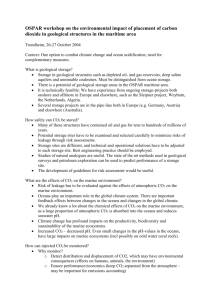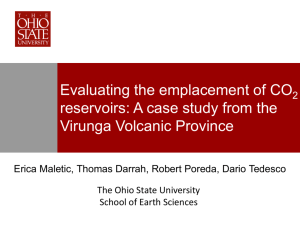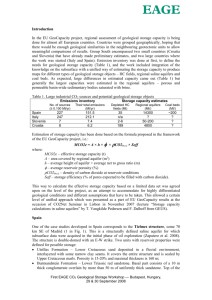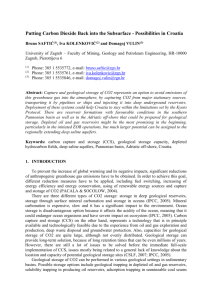Curtis Geosciences Research Income
advertisement
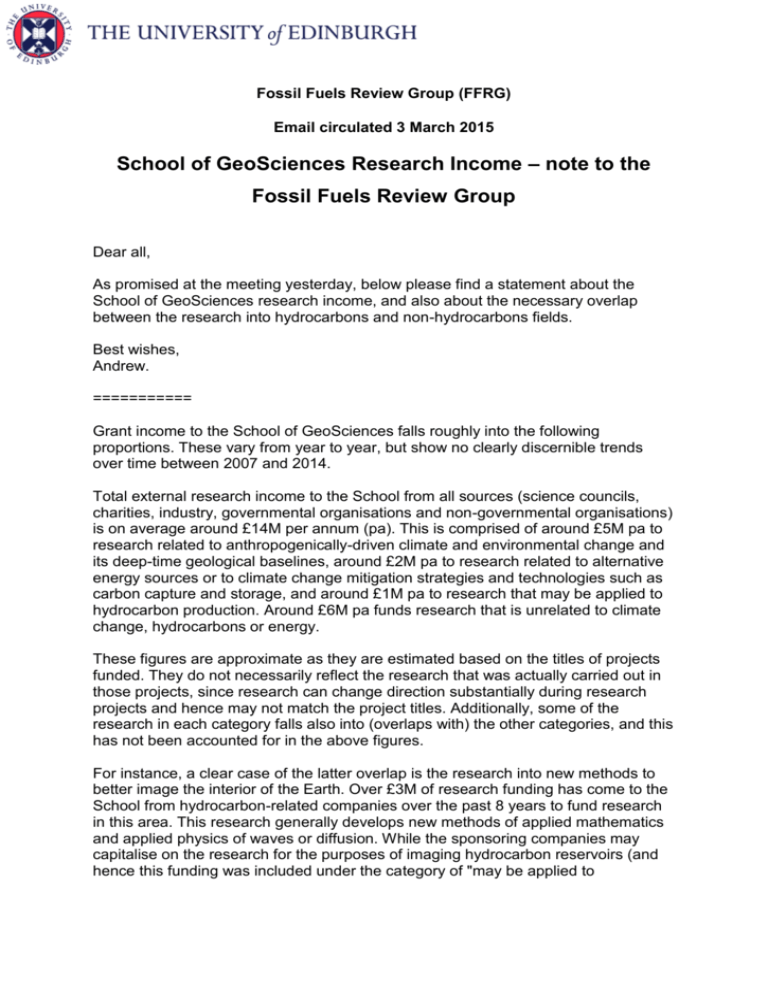
Fossil Fuels Review Group (FFRG) Email circulated 3 March 2015 School of GeoSciences Research Income – note to the Fossil Fuels Review Group Dear all, As promised at the meeting yesterday, below please find a statement about the School of GeoSciences research income, and also about the necessary overlap between the research into hydrocarbons and non-hydrocarbons fields. Best wishes, Andrew. =========== Grant income to the School of GeoSciences falls roughly into the following proportions. These vary from year to year, but show no clearly discernible trends over time between 2007 and 2014. Total external research income to the School from all sources (science councils, charities, industry, governmental organisations and non-governmental organisations) is on average around £14M per annum (pa). This is comprised of around £5M pa to research related to anthropogenically-driven climate and environmental change and its deep-time geological baselines, around £2M pa to research related to alternative energy sources or to climate change mitigation strategies and technologies such as carbon capture and storage, and around £1M pa to research that may be applied to hydrocarbon production. Around £6M pa funds research that is unrelated to climate change, hydrocarbons or energy. These figures are approximate as they are estimated based on the titles of projects funded. They do not necessarily reflect the research that was actually carried out in those projects, since research can change direction substantially during research projects and hence may not match the project titles. Additionally, some of the research in each category falls also into (overlaps with) the other categories, and this has not been accounted for in the above figures. For instance, a clear case of the latter overlap is the research into new methods to better image the interior of the Earth. Over £3M of research funding has come to the School from hydrocarbon-related companies over the past 8 years to fund research in this area. This research generally develops new methods of applied mathematics and applied physics of waves or diffusion. While the sponsoring companies may capitalise on the research for the purposes of imaging hydrocarbon reservoirs (and hence this funding was included under the category of "may be applied to hydrocarbons" in the figures given above), such advances in this same technology are also important for other, non-hydrocarbon areas of application. For example, carbon dioxide (CO2) is already pumped into subsurface geological storage reservoirs in order to reduce atmospheric emissions of CO2 to reduce greenhouse gas related climate change. In future this CO2 will be derived not only from power plants but also from large industries such as cement, paper, steel or whisky. Stored CO2 must be monitored such that any potential movement of CO2 from the reservoir can be detected, and remedial action taken. The accurate monitoring of CO2 requires low cost and increasingly accurate methods of remote sensing, imaging and monitoring of the Earth's subsurface using technology that is deployed on the surface, a kilometre or more above the reservoir. Such methods are developed in the industrially funded imaging research projects, and a lot of the fundamental research has ben, and is, undertaken in the UK. Indeed, some of the same companies that sponsor the imaging research at the University of Edinburgh are responsible for developing the only CO2 storage test sites currently in operation in Europe, and hydrocarbons companies will almost inevitably be involved in the UK's planned CO2 test storage sites, two of which are under consideration for funding by the UK government. As a consequence, in recent years several grants have been applied for from science councils for research on the monitoring of CO2 (or nuclear waste) stored in the Earth's subsurface, based on the technologies developed in these industrially funded imaging projects. A second example is basic research to improve our understanding of the secure CO2 retention during deep geological storage. The deep reservoirs are well-known from information directly derived from hydrocarbon exploration and production of oil and gas. The overlying sediments are part of a natural sealing and retention system, which prevents unintended movement of CO2 upwards towards the surface. The uppermost kilometre of these sediments are often poorly known, because they do not directly host hydrocarbon deposits. Nevertheless an improved understanding is highly desirable. Consequently a consortium of UK, Norwegian and USA earth scientists, initiated by the University of Edinburgh, is progressing towards a £25M drilling campaign in the North Sea, to obtain cored sediment samples and other measurements, from that uppermost kilometre. The evidence held in these sediments will also provide the first continual record of the pre-glacial and glacial history of ancient climate from the North European ice sheets during the past 2.8 Million years. The identification of drill sites, the understanding of rock layering, and the technological support is all directly derived from oil company information. Two oil companies are directly and closely involved with designing the research programme, as they expect to use the results. This will be operated under the International Ocean Discovery Program, the antecedents of which have made fundamental discoveries of plate tectonics and global climate change. =============



